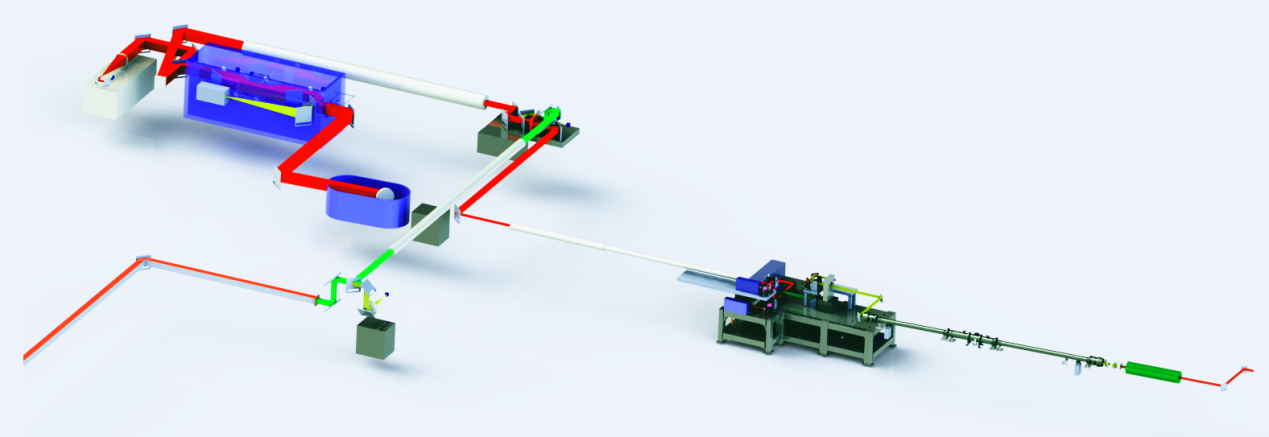
Femtosecond Peta-Watt (PW) laser facilities are important platforms for strong field physics research. Many countries and laboratories have carried out studies and developments of such large laser facilities. However, output characteristics of the PW lasers are different from other types of laser devices. Laser pulse with hundreds of nanometers in spectral bandwidth and high contrast on petawatt power scale must be focused up to the diffraction limit.
To a large extent, it demands the spatiotemporal characteristics and beam directivity. Without other characteristics, a very high parameter such as power or energy cannot guaranttee the laser's availability for physical experiment. Until now, there are very few fs-PW laser facilities that can operate stably and serve physical experiments.
The National Laboratory on High Power Laser and Physics, Shanghai Institute of Optics and fine Mechanics, Chinese Academy of Sciences, (NLHPLP, SIOM, CAS), have independently designed and constructed the SG-II 5PW laser facility, taking advantage of Shenguang (SG)-II laser facility as high-quality pump source.
In the laboratory, optical parametric chirp pulse amplification (OPCPA) is adopted as the general technical route. With three OPCPA amplification stages, SG-II 5PW laser will be capable of delivering 150J/ 30 fs to the target. The device was designed in pursuit of high-quality output laser performance, independent operation and combined operation with other laser beams of SG-II laser facility.
After the completement of SG-II 5PW laser facility, it will become an organic component of the integrated SG-II laser-physics platform, which is multi-functional and can realize target shooting with pulses of various duration, energy, wavefront and light frequency.

Figure 1. The layout of SG-II 5PW laser facility. (Image by SIOM)
In March 2019, based on the accomplishment of SG-II 5PW performance optimization, the group of Prof. ZHU Jianqiang and Prof. XIE Xinglong from SIOM together with the team from Shanghai Institute of Laser Plasma, China Academy of Engineering Physics, have jointly completed a latest round of proton acceleration experiment.
In the experiment, the flat copper targets of various thickness were adopted to interact with the laser pulses. Both strength and mass of the proton beams can meet the needs of proton imaging experiment. A focused density exceeding 1020W/cm2 can be deduced reversely by the proton acceleration kinetic energy.
In this physical study, 10 shots of high-energy laser have been completed, and 9 of them were successful. Using the copper targets with thickness ranging from 0.8 m to 20 m, the measuring results of the proton acceleration were all appreciable.

Figure 2. (a) X-ray focal spot distribution measured by pinhole camera under high-energy shooting, (b) RCF film recording pattern in proton acceleration experiment, (c) proton beam spatial distribution recorded by RCF. (Image by SIOM)
The results prove that SG–II 5PW laser facility has achieved stable operation. It can carry out routine physical experiments in petawatt scale, which currently makes it one of the few specialized laser facilities worldwide.
The development of SG–II 5PW laser facility upgrades the development of the ultra-short pulse laser technology and engineering in NLHPHP since 1990s. With SG–II 5PW laser facility, the SG-II integrated experimental platform have the ability of delivering laser pulses of nanosecond high-energy, picosecond PW and femtosecond milti-PW scales.
It has also promoted cooperation among the teams from China, Hungary and the Czech Republic, which are installing the ELI facilities. Their joint experiments are planned in the summer of 2019.
This facility has contributed to the completion of a collaborative physics project with the Hebrew university team in Israel and continues to support an ongoing research in laser plasma effects. In the future, more extensive and in-depth joint researches with laser-physics teams, both domestically and overseas, can be expected from this platform.

86-10-68597521 (day)
86-10-68597289 (night)

52 Sanlihe Rd., Xicheng District,
Beijing, China (100864)

